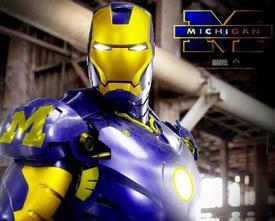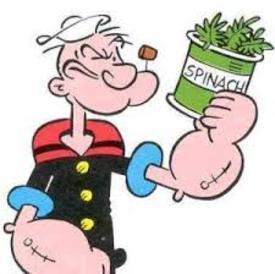MFP tracks calories for cardio, but not strength?

PecanWaffle
Posts: 42 Member
Fairly new here, just wondering why MFP will credit calories burned on cardio but not strength exercises?
Perhaps I'm logging the data wrong?
Thanks for any help,
PW
Perhaps I'm logging the data wrong?
Thanks for any help,
PW
0
Replies
-
You are doing it right but for some reason it does not track strength progression0
-
I was also hoping to see "calories burned" when I entered in my strength training exercises.
The only solution I've found is to select "Strength Training" from the cardio exercise list and enter the number of minutes. Not sure how accurate the calories burned estimation is, but its something! The higher caloric burn the more motivated I am to keep exercising, hard, so I love having that number!0 -
Indeed, obviously three sets of 10 bench presses at 120 lbs per rep burns SOMETHING lol. It takes energy to move those weights.0
-
Glad I saw your post, now I know where to add the strength training exercises to see the calorie burn. I also NEED to see some sort of number for calories burned...keeps me motivated too
 0
0 -
Strength training calories are not inconsequential but neither are they high...and they vary so much person to person there really isn't an accurate way to track. Use cardio for calorie burn and strength for muscle building. Look at those extra cals as bonus but don't factor them into your diet plan!0
-
This is where a heart rate monitor that computes calories burned rocks. My focus is on bodyweight strength training. MFP gives some calorie expenditures for this exercise and that, but IMO, an HR monitor is more accurate. I time my entire session, the HR monitor gives me data including how many calories I've burned in that session. I enter it as Cardio using the category of Bodyweight Strength Training.
And yes, resistance training can be rather intense from a cardio standpoint.0 -
This is where a heart rate monitor that computes calories burned rocks. My focus is on bodyweight strength training. MFP gives some calorie expenditures for this exercise and that, but IMO, an HR monitor is more accurate.
No, it's not, HRMs are quite terrible at guesstimating burns for those types of workouts.0 -
This is where a heart rate monitor that computes calories burned rocks. My focus is on bodyweight strength training. MFP gives some calorie expenditures for this exercise and that, but IMO, an HR monitor is more accurate.
No, it's not, HRMs are quite terrible at guesstimating burns for those types of workouts.
THIS...HRM algorithms are good at tracking steady state cardio calories but not weigh training which more closely resembles interval training from a heart rate standpoint, another thing HRMs are also notoriously inaccurate for.0 -
This is where a heart rate monitor that computes calories burned rocks. My focus is on bodyweight strength training. MFP gives some calorie expenditures for this exercise and that, but IMO, an HR monitor is more accurate.
No, it's not, HRMs are quite terrible at guesstimating burns for those types of workouts.
True. On the other hand, that is not because there are NO calories burned during strength training. It is because it is so difficult to estimate because there are so many variables (whereas with steady state cardio there are some pretty well established estimate formulas based on plenty of studies).
It is pretty depressing to spend an hour at the gym working hard and not have any 'credit' for it in your daily calories. I usually add it as an item in my daily exercise using the 'strength training' item in the cardio section and low ball it. e.g. if I spend some time and MFP comes up with an estimate of 375 calories, I will bump the time down till it says 300 calories and add that.
I don't like the 'it can't be estimated accurately so you get no credit at all for it' attitude. If I am putting all that work in, I want some calorie credit in return for it!0 -
You can log "strength-training" under the cardio section. I feel like MFP underestimates how many cals you burn when you enter it this way. I googled "how many cals burned by strength-training..." I found an algorithm to estimate cals burned based on intensity. I just still log my strength-training in my "cardio" section...I figure underestimating cals burned is better than OVERestimating cals burned.0
-
I don't like the 'it can't be estimated accurately so you get no credit at all for it' attitude. If I am putting all that work in, I want some calorie credit in return for it!
the credit comes from lifting more weight for more reps next time you try the same exercise! Don't lift for credit or weight loss, lift for strength. Diet and do cardio for weight loss credit!0 -
There's really no accurate way to determine calories burned during strength/weight training other than before/after blood tests. Even my Fitbit Force doesn't do a good job at it, although it will show some caloric burn. Personally, I don't try to determine the calories burned in strength training as I do it to gain muscle/increase metabolism. I do count my cardio and other normal activity with my BMR using the Fitbit.0
-
log your time under the "strength training" listing in cardio.
The strength section is to keep track of the current weights and reps you are lifting. It would be nice if they showed a progression, though.0 -
you are better off just calculating TDEE and deducting 25% and eating that number, because TDEE already has exercise built into it...0
-
It's because there is such a range between what people can lift, and how many calories they will burn You can try to guess using the "strength training" option under cardio, but I would recommend investing in a heart rate monitor to accurately track everything.0
-
I use my heart rate monitor to track calories burned during strength training. I just log it under cardio.0
-
you are better off just calculating TDEE and deducting 25% and eating that number, because TDEE already has exercise built into it...
This is one reason why I use the TDEE model. It saves me a lot of time versus caloric caloric burn from each individual exercise. I was able to easily maintain my ideal running weight all year with a TDEE model. Now I am using a TDEE model while eating at a surplus to bulk.
I second what others have said about HRMs being best for estimating caloric burn from steady state cardio (not strength training).0
This discussion has been closed.
Categories
- All Categories
- 1.4M Health, Wellness and Goals
- 398.5K Introduce Yourself
- 44.7K Getting Started
- 261K Health and Weight Loss
- 176.4K Food and Nutrition
- 47.7K Recipes
- 233K Fitness and Exercise
- 462 Sleep, Mindfulness and Overall Wellness
- 6.5K Goal: Maintaining Weight
- 8.7K Goal: Gaining Weight and Body Building
- 153.5K Motivation and Support
- 8.4K Challenges
- 1.4K Debate Club
- 96.5K Chit-Chat
- 2.6K Fun and Games
- 4.8K MyFitnessPal Information
- 18 News and Announcements
- 21 MyFitnessPal Academy
- 1.5K Feature Suggestions and Ideas
- 3.2K MyFitnessPal Tech Support Questions












